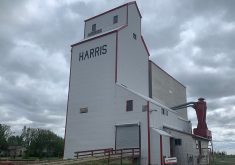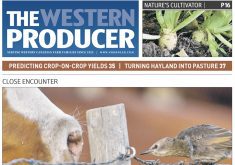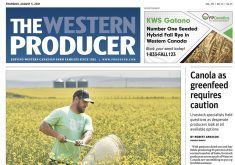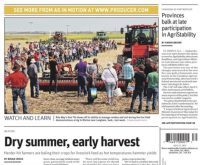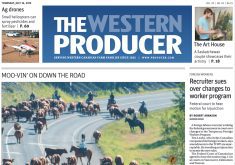There were no glaring headlines in the Sept. 24, 1931, issue of The Western Producer to indicate that the Prairies were in the grips of the Dirty Thirties and the Great Depression, but the signs were there.
There were stories about financial developments, both international and domestic, as well as articles about currency, banks and federal relief measures.
The Mainly for Women section had tips for making things last in a letter from Mrs. T.E. from Orkney, Sask., called To the Hard Times Scrapbook.
Read Also

Downturn in grain farm economics threatens to be long term
We might look back at this fall as the turning point in grain farm economics — the point where making money became really difficult.
“When boiling dried fruit, will save sugar if a little baking soda is used,” Mrs. T.E. wrote.
But other than that, it appeared to be business as usual.
A section called Farm Management included a story by Professor E.A. Hardy that explored the benefits of using a header barge to harvest grain.
The story didn’t say what a header barge was, but some time on the internet revealed that it was a header used to cut grain running alongside a “barge,” or a specially designed wagon for collecting the grain as a conveyor moved it from the header.
Prof. Hardy sang the praises of this technology.
“Weather risk is reduced and straw is available for stock,” he wrote.
The story was accompanied by photos of header barges operating on two Saskatchewan farms.
In one, the apparatus was pulled by horses on a farm at Rockhaven, Sask., while in the other, it was pulled by a tractor on the Rutledge farm near Delisle, Sask. According to the photo caption, Mr. Rutledge had built the machine and used it to cut 1,000 acres that fall.
In other news, the first cargo of western grain was leaving the port at Churchill, Man., while a story quoted the Financial Post as reporting that Canadian National Railway and Canadian Pacific Railway were discussing amalgamation and that a royal inquiry had been proposed.





